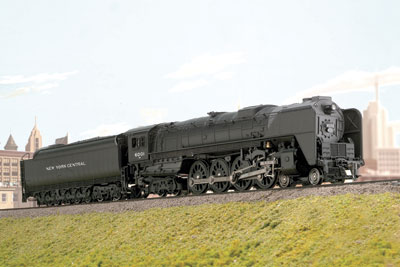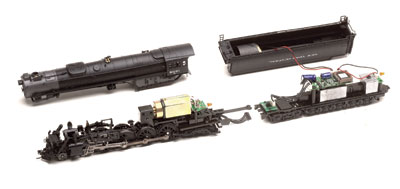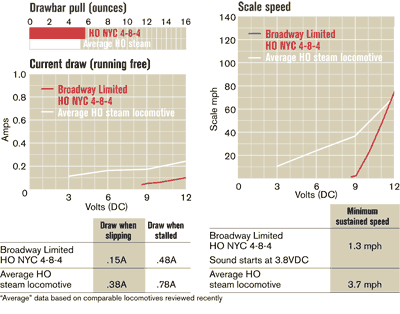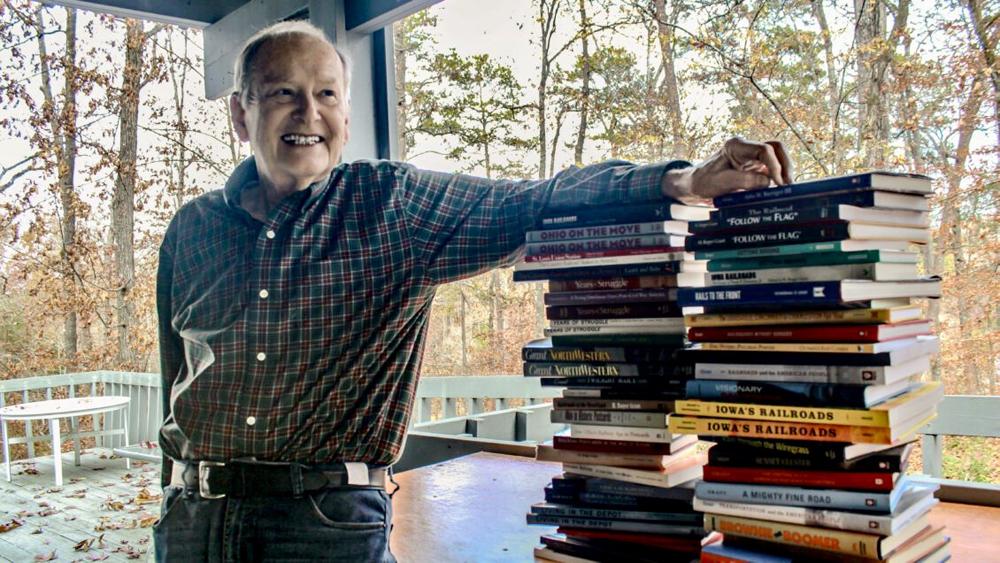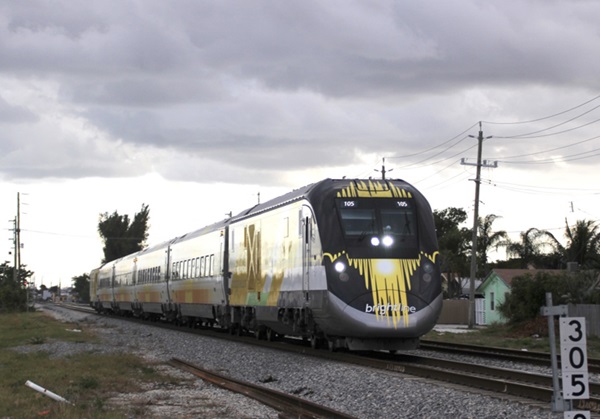Historical perspective. Recently, some authors have rightly questioned whether the enormous investment made by America’s railroads during the 1930s and 1940s in high-horsepower modern steam locomotives was justified. After all, pulling a 20 mph drag freight with an 80″-drivered 4-8-4 is literally the equivalent of pulling a U-Haul trailer with your race car. On many lines, that’s exactly what happened. Not so on the New York Central. There, the big steam engines ran in the roles they were built to handle until retirement.
By the early 1940s, it was clear that even the J-3a “super” Hudsons were hard-pressed to keep the NYC’s heavy limiteds running on schedule. The NYC’s management decided that a modern 4-8-4 could provide more horsepower for passenger and freight trains alike.
Paul Kiefer, the NYC’s chief engineer of motive power and rolling stock, led his team in designing a 4-8-4 that could meet the road’s needs and fit within the NYC’s tight clearances. While Alco built three versions of the locomotive, the class S-1b was the production model. Thus, a total of 25 S-1b locomotives entered service in late 1945 and early 1946.
Did they run? Oh, yeah. In fact, they averaged as much as 700 miles per day between overhauls, and they generated 6,500 hp at the cylinders and 5,000 hp at the drawbar. While it would make a wonderful end to the story to say that their truly stellar performance held off the diesels, that didn’t happen.
It matches the dimensions given in the Model Railroader Cyclopedia Vol. 1: Steam Locomotives exactly except for a 1-scale-foot extension in the driving wheelbase to accommodate model-sized flanges and a similar lengthening of the lead truck for clearance under the cylinders.
Virtually all the details on the Niagara are added separately, and even the cast-on details are crisply executed. The paint is smooth and the lettering neat and opaque. The side rods have the correct “extended main rod” or paired rods between the center drivers, and they have a beautiful blue-gray finish. It’s a handsome model, and in my opinion this is BLI’s finest steam locomotive yet.
We didn’t find many errors, but here they are: the pump for the Worthington feedwater heater is mounted too low, putting its exhaust pipe (by the fireman’s side cylinder) at a slight angle, rather than parallel with the ground; and two pipes by the stack (also for the feedwater heater) are missing.
I also found the large hexagonal heads on the crank pin screws distracting. The Niagaras had roller-bearing rods with large round retainers on their crank pins; a screw with a 12-point or round Torx head might look more realistic.
The lead truck on the tender swivels and slides laterally, and three of the five fixed axles are free to move laterally. The locomotive and tender track well, but this is a substantial locomotive, so the minimum radius is 22″.
The Niagara pulled the equivalent of 26 passenger or 78 free-rolling freight cars on straight and level track without traction tires.
The sound system performed as advertised, and the sound is rich and distortion-free at the preset level. A horn would be a nice addition, along with the whistle, since Niagaras had both (and the model does have a horn mounted on the boiler).
This model’s updated QSI system allows an operator with an Atlas or BLI Quantum Engineer box and a DC power pack to operate nearly all of the features available with DCC. A small magnet is included to reset the system’s factory default settings.
As part of my research for this review, I compared this locomotive with BLI’s New York Central Hudson and Norfolk & Western Class A, both of which won MR’s Product of the Year award. They’re fine locomotives, but this model is better.
In operating quality, accuracy, and detail, the BLI Niagara can hold its own in comparison with any of today’s HO steam power. It’s a faithful representation of a compelling prototype, and it looks great at the head of one of the trains in the Great Steel Fleet. Want proof? See the video at modelrailoader.com.
Price: $249.99, without sound; $329.99, with QSI sound
Manufacturer
Broadway Limited Imports
4 Signal Ave., Suite C
Ormond Beach, FL 32174
www.broadway-limited.com
Description
Plastic and metal ready-to-run
steam locomotive
Road names
New York Central engine num-
bers 6001, 6017, or 6024, and painted, but unlettered
Features
*Automatic dual-mode sound
decoder for use on layouts
with DC or Digital Command
Control (DCC)
Cab interior with backhead
Clear window glazing
Die-cast metal locomotive frame
and tender chassis
*Factory-installed QSI Quantum
sound system
Five-pole can motor with flywheels Kadee magnetic knuckle couplers
mounted at the proper height
Minimum 22″-radius curves
NMRA RP-25 contour wheels
mounted in gauge
Reversing constant headlights
*Slave control to mute whistle and
bell while double heading
* Feature available only on
models with sound





